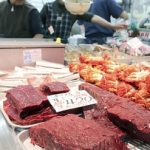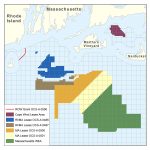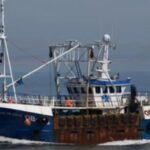Tag Archives: cod
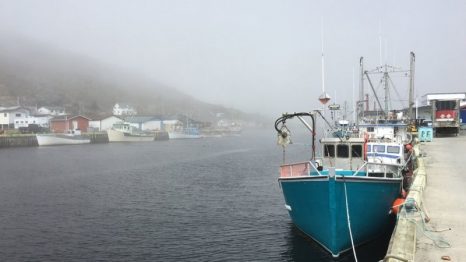
Can cod comeback keep a Canadian fishery afloat?
A generation after Canada declared a moratorium on northern cod fishing off the coast of Newfoundland and Labrador, the species is making a comeback. But can the province’s troubled fishery survive to take advantage of cod’s resurgence? The wharf in Petty Harbour is quiet, and Todd Chafe, a 46-year-old fisherman, is slicing up cod for a nearby family restaurant in a shack near the water. “Some fellas like to point fingers: ‘Ah, this done it, foreigners done it’,” he says. Chafe is talking about the collapse of northern cod off the coast of Newfoundland and Labrador 25 years ago. “We all done it, every single person that went fishing done it. Everybody fished for it so everybody had a hand in destroying it.”,,, Now there is a glimmer of hope. Northern cod stock has reached about 25% of the levels seen in the ’80s. But there is a fierce debate over what the return of cod fishing should look like in Newfoundland. click here to read the story 20:22
FISH-NL describes price of cod as ‘scandalous’ and another example of FFAW conflict; renews call for province to allow in outside buyers
 The Federation of Independent Sea Harvesters of Newfoundland and Labrador (FISH-NL) says the 2017 price of cod recently negotiated by the FFAW is an insult to the province’s inshore harvesters, and renews its call for the province to allow in outside buyers. “That price is scandalous,” says Ryan Cleary, President of FISH-NL. “It’s an insult to already injured inshore harvesters. The FFAW expects cod will save harvesters from shellfish declines, but then the union agrees to a price that will starve our fish harvesters as fast as DFO mismanagement.”The high price of cod this year is up 5 cents a pound. The 2017 price per pound paid to harvesters for Grade A cod has been set at a high of 83 cents, and low of 20 cents. In 2016, the Grade A price paid was 78 cents a pound, with 20 cents as the low mark for Grade C. read the press release here 19:45
The Federation of Independent Sea Harvesters of Newfoundland and Labrador (FISH-NL) says the 2017 price of cod recently negotiated by the FFAW is an insult to the province’s inshore harvesters, and renews its call for the province to allow in outside buyers. “That price is scandalous,” says Ryan Cleary, President of FISH-NL. “It’s an insult to already injured inshore harvesters. The FFAW expects cod will save harvesters from shellfish declines, but then the union agrees to a price that will starve our fish harvesters as fast as DFO mismanagement.”The high price of cod this year is up 5 cents a pound. The 2017 price per pound paid to harvesters for Grade A cod has been set at a high of 83 cents, and low of 20 cents. In 2016, the Grade A price paid was 78 cents a pound, with 20 cents as the low mark for Grade C. read the press release here 19:45
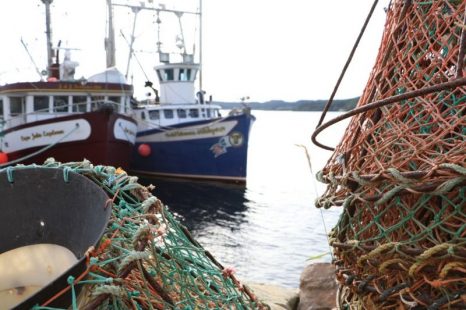
Newfoundland and Labrador Fishermen don’t agree that crab, shrimp stocks are as bad as scientists say
The province’s fishery appears to be on the brink of a sea change. News over the past couple of months of continually declining snow crab and northern shrimp stocks in waters off Newfoundland and Labrador’s coasts have sent waves of concern washing over the fishing industry. The expected cuts this spring to crab and shrimp quotas have fisherman all around the province on edge. And there’s little else to fill in the gap — the northern cod stocks, while showing signs of strong growth in recent years, are still not ready for a major commercial fishing effort. Lying in the balance are huge investments in vessels and fishing gear, work for boat crews and plants, and the survival of rural areas of the province. But while scientific stock assessments of crab and shrimp reveal a dismal picture, many fishermen are not so sure that picture is accurate. In fact, many say they are seeing things a bit differently out on the water, and see some hope for the fishery of the future if fishermen are willing to branch out into other potential commercial species. click here to read the story 08:50
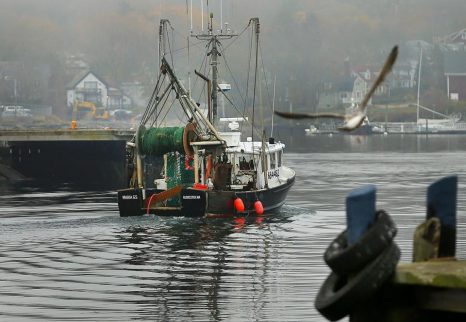
A milestone in the war over the true state of cod
For years, fishermen from Gloucester to New Bedford have accused the federal government of relying on faulty science to assess the health of the region’s cod population, a fundamental flaw that has greatly exaggerated its demise, they say, and led officials to wrongly ban nearly all fishing of the iconic species.The fishermen’s concerns resonated with Governor Charlie Baker, so last year he commissioned his own survey of the waters off New England, where cod were once so abundant that fishermen would say they could walk across the Atlantic on their backs. Now, in a milestone in the war over the true state of cod in the Gulf of Maine, Massachusetts scientists have reached the same dismal conclusion that their federal counterparts did: The region’s cod are at a historic low — about 80 percent less than the population from just a decade ago. continue reading the story here 08:07
New England’s cod catch in nosedive
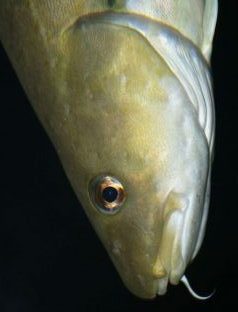 The decline of the fishery has made the U.S. reliant on foreign cod, and cod fish fillets and steaks purchased in American supermarkets and restaurants are now typically caught by Norway, Russia or Iceland in the north Atlantic. In Maine, which is home to the country’s second-largest Atlantic cod fishery, the dwindling catch has many wondering if cod fishing is a thing of the past. “It’s going to be more and more difficult for people to make this work,” said Maggie Raymond, executive director of the Associated Fisheries of Maine. State records say 2016 was historically bad for cod fishing in Maine. Fishermen brought less than 170,000 pounds of the fish to land in the state last year.,,, The National Oceanic and Atmospheric Administration released an assessment of the Gulf of Maine cod stock in 2014 that said the spawning population was at its lowest point in the history of the study of the fish. Scientists have cited years of overfishing and inhospitable environmental conditions as possible reasons for the decline. continue reading the story here 09:50
The decline of the fishery has made the U.S. reliant on foreign cod, and cod fish fillets and steaks purchased in American supermarkets and restaurants are now typically caught by Norway, Russia or Iceland in the north Atlantic. In Maine, which is home to the country’s second-largest Atlantic cod fishery, the dwindling catch has many wondering if cod fishing is a thing of the past. “It’s going to be more and more difficult for people to make this work,” said Maggie Raymond, executive director of the Associated Fisheries of Maine. State records say 2016 was historically bad for cod fishing in Maine. Fishermen brought less than 170,000 pounds of the fish to land in the state last year.,,, The National Oceanic and Atmospheric Administration released an assessment of the Gulf of Maine cod stock in 2014 that said the spawning population was at its lowest point in the history of the study of the fish. Scientists have cited years of overfishing and inhospitable environmental conditions as possible reasons for the decline. continue reading the story here 09:50
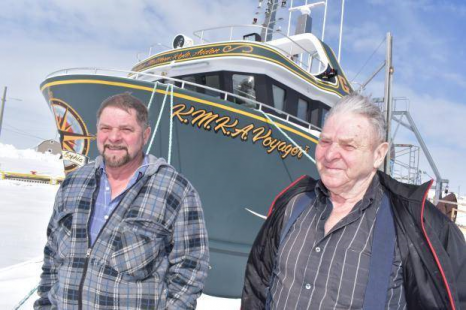
The cod are coming back to Newfoundland — and they’re eating the shrimp that had taken over
Theodore Genge has a big beautiful new dragger that’ll be ready to head for “the Labrador” as soon as the sea ice loosens its grip on Anchor Point. When the 63-year-old Newfoundland fisherman began building the $2.2 million trawler two years ago he had 750,000 pounds worth of shrimp quota to catch. But plummeting shrimp numbers in the cold water off Labrador have led Fisheries and Oceans Canada to drastically carve into quotas for that coast. Genge expects that by April he’ll be left with a total of 300,000 lbs of quotas — 220,000 lbs in the Gulf of St. Lawrence, where there is still plenty of shrimp, and 80,000 lbs on the Labrador coast. “Right now, yes, it’s pretty stressful – I don’t know whether there’s any hope or no,” said Genge. (Big read!) continue reading the article here 16:25
Cod Found Once Again in Cold Ocean Waters off New York Harbor
 Over the last several years, one fish in particular has been making a slow, but steady comeback in the offshore environment of the northwestern North Atlantic. It was a fish that was so plentiful at one time that it filled the cold waters of New England’s rocky coastline, so much so that early Europeans named a large peninsula in Massachusetts after the fish. Cod, as declared by both the Boston Globe and the New Scientist, are making a comeback, after decades of strict government regulations. Last year, the Boston Globe wrote that the Canadian fishing authorities released a report in spring 2016 suggesting “cod are finally making a comeback….The report found that the adult population of northern cod had more than doubled in size over the past three years, and it estimates that the spawning stock will double again within the next three years — bringing it two-thirds of the way back to a healthy fishery.” It’s not just in New England and Canada either. Nearby recreational fisherman out of New York City and along Long Island to Montauk and down the Jersey Shore to Point Pleasant for the last several years have been finding more cod while angling out in the ocean during winter or early spring cod fishing trips. Read the article here 08:46
Over the last several years, one fish in particular has been making a slow, but steady comeback in the offshore environment of the northwestern North Atlantic. It was a fish that was so plentiful at one time that it filled the cold waters of New England’s rocky coastline, so much so that early Europeans named a large peninsula in Massachusetts after the fish. Cod, as declared by both the Boston Globe and the New Scientist, are making a comeback, after decades of strict government regulations. Last year, the Boston Globe wrote that the Canadian fishing authorities released a report in spring 2016 suggesting “cod are finally making a comeback….The report found that the adult population of northern cod had more than doubled in size over the past three years, and it estimates that the spawning stock will double again within the next three years — bringing it two-thirds of the way back to a healthy fishery.” It’s not just in New England and Canada either. Nearby recreational fisherman out of New York City and along Long Island to Montauk and down the Jersey Shore to Point Pleasant for the last several years have been finding more cod while angling out in the ocean during winter or early spring cod fishing trips. Read the article here 08:46
Cod an option in face of looming shrimp cuts, says FFAW
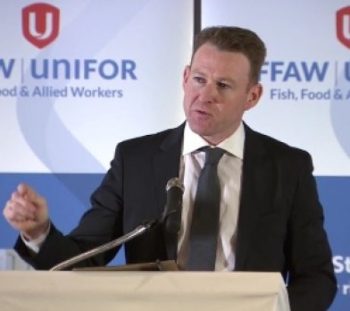 The Fish, Food and Allied Workers union says expansion into commercial cod fishing is a possibility for harvesters, as another cut to overall shrimp quotas looms for next season. Following revelations by the Department of Fisheries and Oceans this week that the shrimp stock in the crucial Zone 6 area off of Newfoundland has fallen again, FFAW president Keith Sullivan says it looks like another quota cut is coming — but there may be alternatives. According to the Department of Fisheries and Oceans, the landed value of shrimp in Newfoundland and Labrador in 2016 dropped to $276 million. Read the story here 08:29
The Fish, Food and Allied Workers union says expansion into commercial cod fishing is a possibility for harvesters, as another cut to overall shrimp quotas looms for next season. Following revelations by the Department of Fisheries and Oceans this week that the shrimp stock in the crucial Zone 6 area off of Newfoundland has fallen again, FFAW president Keith Sullivan says it looks like another quota cut is coming — but there may be alternatives. According to the Department of Fisheries and Oceans, the landed value of shrimp in Newfoundland and Labrador in 2016 dropped to $276 million. Read the story here 08:29
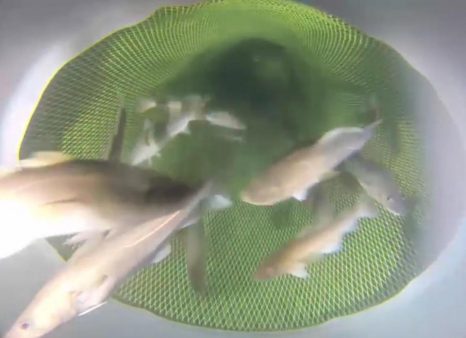
New SMAST camera can help assess cod stocks in Gulf of Maine
Researchers from UMass Dartmouth say they have successfully tested an underwater video-survey system that they hope will provide an accurate method to assess Atlantic cod stocks. In collaboration with fishermen, the research team recently placed high-resolution cameras in an open-ended commercial trawl net on Stellwagen Bank in the Gulf of Maine, known as one of the world’s most active marine sanctuaries. The cameras captured images of cod and other groundfish as they passed through the net. Periodically, researchers from UMD’s School for Marine Science & Technology closed the net for short periods to collect length, weight, and take other biological samples from some of the fish. The fish are unharmed and are returned to the sea. The system is design to be portable, so scientists can set it up on different fishing vessels. Professor Kevin Stokesbury, head researcher on the project, said the video system is an important tool at a time of uncertainty about the groundfish stock in the Gulf of Maine. Read the story here 17:57 Read the press release and watch the video here
Using cod pots could be the way of the future for cod fishery
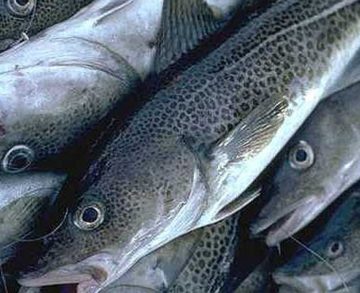 Phillip Meintzer thinks there might be a better way to fish for cod off the waters of Newfoundland and Labrador. The master’s graduate student in science from the Centre for Sustainable Aquatic Resources, Marine Institute of Memorial University, was guest speaker for the weekly Coastal Matters series at Grenfell Campus, Memorial University in Corner Brook Thursday. His presentation discussed promoting the conservation of Atlantic cod through the improvement and implementation of cod pots in the province. Here are five things to know about cod pots. Read the rest here 09:59
Phillip Meintzer thinks there might be a better way to fish for cod off the waters of Newfoundland and Labrador. The master’s graduate student in science from the Centre for Sustainable Aquatic Resources, Marine Institute of Memorial University, was guest speaker for the weekly Coastal Matters series at Grenfell Campus, Memorial University in Corner Brook Thursday. His presentation discussed promoting the conservation of Atlantic cod through the improvement and implementation of cod pots in the province. Here are five things to know about cod pots. Read the rest here 09:59

Letter: New year brings new hope for the fishery – Francis Patey, St. Anthony
As we move through January and discard the old calendar, we might ask ourselves what kind of year 2016 was for rural Newfoundland and Labrador. For me, personally, the top event of the year was remembering the 100th anniversary of the Royal Newfoundland Regiment and the Battle of the Somme, which my father was a part of. In 2016, the Liberals were back in power, dealing with a bag of financial problems left behind by the previous government, resulting in tough decisions being made to keep this Rock afloat. As in other years, rural Newfoundland and Labrador was again feeling the hatchet in the form of quota cuts to the shellfish industry, making fishermen wonder if it’s all worth it. Some may ask, with all the doom and gloom of 2016, was there not one single glimmer of light? Yes, there was. For the first time since the cod moratorium, the people in charge of running our fishery finally listened to the fishermen when they said the cod is back and back in abundance. Read the letter here 10:06
A New England story goes Australian – Fishing industries under pressure
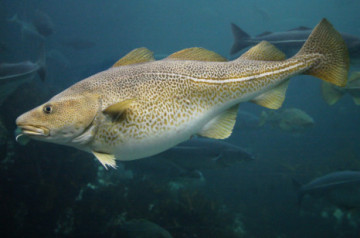 The cod isn’t just a fish to David Goethel. It’s his identity, his ticket to middle class life, his link to a historic industry. “I paid for my education, my wife’s education, my house, my kids’ education; my slice of America was paid for on cod,” said Goethel, a 30-year veteran of waters that once teemed with New England’s signature fish. But on a chilly, windy Saturday in April, after 12 hours out in the Gulf of Maine, he has caught exactly two cod, and he feels far removed from the 1990s, when he could catch 2,000 pounds in a day. The US fishing fleet has dwindled from more than 120,000 vessels in 1996 to about 75,000 today, the Coast Guard says. For the fishermen of the northeastern US – not all of whom accept the scientific consensus on climate change, and many of whom bristle at government regulations stemming from it – whether to stick with fishing, adapt to the changing ocean or leave the business is a constant worry. Robert Bradfield was one of the East Coast’s most endangered species, a Rhode Island lobsterman, until he pulled his traps out of the water for the last time about a decade ago. Read the rest here 09:30
The cod isn’t just a fish to David Goethel. It’s his identity, his ticket to middle class life, his link to a historic industry. “I paid for my education, my wife’s education, my house, my kids’ education; my slice of America was paid for on cod,” said Goethel, a 30-year veteran of waters that once teemed with New England’s signature fish. But on a chilly, windy Saturday in April, after 12 hours out in the Gulf of Maine, he has caught exactly two cod, and he feels far removed from the 1990s, when he could catch 2,000 pounds in a day. The US fishing fleet has dwindled from more than 120,000 vessels in 1996 to about 75,000 today, the Coast Guard says. For the fishermen of the northeastern US – not all of whom accept the scientific consensus on climate change, and many of whom bristle at government regulations stemming from it – whether to stick with fishing, adapt to the changing ocean or leave the business is a constant worry. Robert Bradfield was one of the East Coast’s most endangered species, a Rhode Island lobsterman, until he pulled his traps out of the water for the last time about a decade ago. Read the rest here 09:30
Starving cod – Harvesters reporting catching thin cod with little in their digestive systems
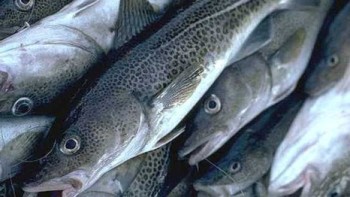 Scientists with the Department of Fisheries and Oceans are keeping a close eye on cod stocks in southern Labrador, in the wake of reports from harvesters catching fish in rough shape this season. “What we’re catching here now, it’s very poor. There’s nothing in the puttocks [digestive tract] of the fish,” fisherman Warrick Chubbs told CBC’s The Broadcast. “Only little jellyfish, the size of your thumbnail, and not many of them. The very odd one, you’ll see maybe one or two rotten shrimp.” Chubbs isn’t alone in his concerns. “It certainly seems like this year in southern Labrador the cod are not in very good condition at all,” said DFO research scientist John Brattey, who is hearing multiple similar reports from the region. Read the story here 08:26
Scientists with the Department of Fisheries and Oceans are keeping a close eye on cod stocks in southern Labrador, in the wake of reports from harvesters catching fish in rough shape this season. “What we’re catching here now, it’s very poor. There’s nothing in the puttocks [digestive tract] of the fish,” fisherman Warrick Chubbs told CBC’s The Broadcast. “Only little jellyfish, the size of your thumbnail, and not many of them. The very odd one, you’ll see maybe one or two rotten shrimp.” Chubbs isn’t alone in his concerns. “It certainly seems like this year in southern Labrador the cod are not in very good condition at all,” said DFO research scientist John Brattey, who is hearing multiple similar reports from the region. Read the story here 08:26
Quality more important than quantity in cod fishing, says FFAW
 Researchers with the Fish, Food and Allied Workers Union (FFAW) are working with fish harvesters to determine how to ensure cod caught in Newfoundland and Labrador is top quality. As Newfoundlanders and Labradorians can attest, many can tell the difference between a great piece of cod and an average one. And the FFAW’s new project is aiming to close the gap between the two. Bill Broderick, the inshore director of the FFAW, told CBC’s The Broadcast that 32 harvesters have signed on for the project. He said fish harvesters need to ensure they catch quality cod because, these days, quality is more important than quantity. Read the rest here 09:47
Researchers with the Fish, Food and Allied Workers Union (FFAW) are working with fish harvesters to determine how to ensure cod caught in Newfoundland and Labrador is top quality. As Newfoundlanders and Labradorians can attest, many can tell the difference between a great piece of cod and an average one. And the FFAW’s new project is aiming to close the gap between the two. Bill Broderick, the inshore director of the FFAW, told CBC’s The Broadcast that 32 harvesters have signed on for the project. He said fish harvesters need to ensure they catch quality cod because, these days, quality is more important than quantity. Read the rest here 09:47
Cod Is Dead—Is Dogfish the Answer?
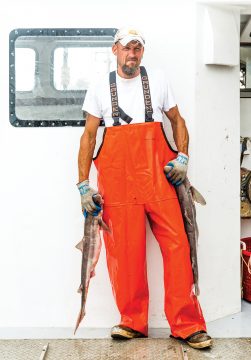 On a wind-tossed autumn morning off the Cape Cod coast, the aft deck of Doug Feeney’s 36-foot fishing boat, the Noah, is buried beneath a squirming, slimy, shin-deep layer of sharks. The Noah’s hauler growls under the weight of the 300-hook long line emerging from the froth-tipped Atlantic. The reek of gasoline mingles with salt. A procession of small gray sharks, each pierced neatly through the jaw by a steel hook, materializes from the depths. Feeney, a lean fisherman whose goatee and hoop earrings lend him a vaguely piratical mien, yanks the sharks from the line with the steady rhythm of an assembly-line worker. A drained cup of coffee perches on the dashboard; James Taylor warbles on the radio. “Twenty-five years ago we’d catch 10,000 pounds of these things every day,” Feeney shouts over the roar of the engines and “Fire and Rain.” “We’d just throw ’em back over the side.” Like many Chatham fishermen, Feeney is a jack-of-all-trades. He gillnets monkfish in early spring, he trolls for bluefin tuna in late fall. But no species occupies more of his energy than the spiny dogfish, the dachshund-size shark now piling up on the Noah’s deck. Read the story here 09:27
On a wind-tossed autumn morning off the Cape Cod coast, the aft deck of Doug Feeney’s 36-foot fishing boat, the Noah, is buried beneath a squirming, slimy, shin-deep layer of sharks. The Noah’s hauler growls under the weight of the 300-hook long line emerging from the froth-tipped Atlantic. The reek of gasoline mingles with salt. A procession of small gray sharks, each pierced neatly through the jaw by a steel hook, materializes from the depths. Feeney, a lean fisherman whose goatee and hoop earrings lend him a vaguely piratical mien, yanks the sharks from the line with the steady rhythm of an assembly-line worker. A drained cup of coffee perches on the dashboard; James Taylor warbles on the radio. “Twenty-five years ago we’d catch 10,000 pounds of these things every day,” Feeney shouts over the roar of the engines and “Fire and Rain.” “We’d just throw ’em back over the side.” Like many Chatham fishermen, Feeney is a jack-of-all-trades. He gillnets monkfish in early spring, he trolls for bluefin tuna in late fall. But no species occupies more of his energy than the spiny dogfish, the dachshund-size shark now piling up on the Noah’s deck. Read the story here 09:27

New England’s embattled fishermen – To the north, in the waters off Newfoundland, the cod are coming back
For more than 500 years, the iceberg-filled waters off Newfoundland’s craggy coast teemed with a seemingly endless supply of cod, so much that it sparked wars, drew immigrants from far away, and defined the rhythm of life. Here, cod have been so woven into the culture that most people refer to them simply as fish — as if there were no other. In the late 1960s, when times were good, local fishermen would catch some 800,000 metric tons a year of the olive-backed fish known as the northern cod. In the 1980s, their catch dropped by more than one-third, but the population still appeared relatively healthy. In 1987, the government estimated there were 940,000 metric tons of cod old enough to reproduce. For cod fishermen in New England, where federal authorities two years ago declared a similar moratorium on commercial catches, Newfoundland’s experience provides lessons in the consequences of poor management, the possible impact of climate change, the long years — even decades — it can take for the population to rebound. Read the story here 09:21
Department of Fisheries and Oceans: Northern cod biomass at highest rate since 1992
 The Atlantic cod stocks are returning, but there’s still a long way to go before a large-scale commercial fishery becomes viable again. That’s the finding of new research by the Department of Fisheries and Oceans, which shows that cod stocks in the Northern region are on the way towards leaving the “critical” designation. The stock in the 2J, 3K and 3L regions has increased to an estimated 538,000 tons of fish — the highest rate since 1992. Still, the stock only reaches 34 per cent of the level needed to escape the “critical” zone. DFO performs stock assessments every three years, sourcing information from vessel surveys, commercial catches, tags on the cod and more. In 2013, the stock reached about 300,000 tons in biomass. Today, it’s almost double that. Read the story here 08:23
The Atlantic cod stocks are returning, but there’s still a long way to go before a large-scale commercial fishery becomes viable again. That’s the finding of new research by the Department of Fisheries and Oceans, which shows that cod stocks in the Northern region are on the way towards leaving the “critical” designation. The stock in the 2J, 3K and 3L regions has increased to an estimated 538,000 tons of fish — the highest rate since 1992. Still, the stock only reaches 34 per cent of the level needed to escape the “critical” zone. DFO performs stock assessments every three years, sourcing information from vessel surveys, commercial catches, tags on the cod and more. In 2013, the stock reached about 300,000 tons in biomass. Today, it’s almost double that. Read the story here 08:23
Newfoundland cod stock shows signs of recovery
 The Newfoundland northern cod stock has grown significantly since 2006, according to an independent assessment completed by SAI Global on behalf of WWF-Canada and the Fish, Food and Allied Workers Union (FFAW-Unifor). The assessment cautions, however, that numbers are far below what they were during the peak commercial success of the fishery. FFAW-Unifor, the Seafood Producers of Newfoundland and Labrador, Fogo Island Co-op and WWF-Canada agreed to work together to rebuild the fishery off Newfoundland’s northeast coast, also referred to as area 2J3KL, through a Fisheries Improvement Project (FIP) in 2015. Read the rest here 14:17
The Newfoundland northern cod stock has grown significantly since 2006, according to an independent assessment completed by SAI Global on behalf of WWF-Canada and the Fish, Food and Allied Workers Union (FFAW-Unifor). The assessment cautions, however, that numbers are far below what they were during the peak commercial success of the fishery. FFAW-Unifor, the Seafood Producers of Newfoundland and Labrador, Fogo Island Co-op and WWF-Canada agreed to work together to rebuild the fishery off Newfoundland’s northeast coast, also referred to as area 2J3KL, through a Fisheries Improvement Project (FIP) in 2015. Read the rest here 14:17
New England Fishermen face devastating cod cuts
 New Bedford’s commercial fishing industry — battered by last month’s arrest of magnate Carlos Rafael on federal conspiracy charges, last week’s drug raids on the waterfront and ongoing monitoring costs — took another punch to the gut this week, as government regulators proposed new cuts to cod catches that could take effect May 1. “Those cuts will be devastating to the groundfishing fleet of New Bedford, and the whole New England coast,” said John Haran, manager of groundfish Sector 13. The National Oceanic and Atmospheric Administration (NOAA), in conjunction with the New England Fishery Management Council, released a proposed update Monday to the federal management plan for the northeastern fishery. Read the rest here 20:45
New Bedford’s commercial fishing industry — battered by last month’s arrest of magnate Carlos Rafael on federal conspiracy charges, last week’s drug raids on the waterfront and ongoing monitoring costs — took another punch to the gut this week, as government regulators proposed new cuts to cod catches that could take effect May 1. “Those cuts will be devastating to the groundfishing fleet of New Bedford, and the whole New England coast,” said John Haran, manager of groundfish Sector 13. The National Oceanic and Atmospheric Administration (NOAA), in conjunction with the New England Fishery Management Council, released a proposed update Monday to the federal management plan for the northeastern fishery. Read the rest here 20:45
For some reason, codfish off the province’s south coast aren’t living to a ripe old age.
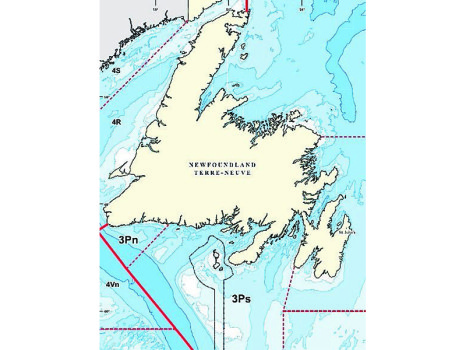 “The obvious question is what’s going on?” said Rick Rideout, a research scientist with the Department of Fisheries and Oceans (DFO). Rideout was the lead scientist on DFO’s science advisory report for last fall’s 3Ps cod stock assessment. The number of new fish in 3Ps seems to have improved in recent years, Rideout said Thursday, but the stock’s trajectory has taken a downward turn. “It’s above the limit reference point, but it’s certainly below the target of where we’d like it to be,” he said. There’s certainly some reason for concern, yeah.” Read the rest here 07:44
“The obvious question is what’s going on?” said Rick Rideout, a research scientist with the Department of Fisheries and Oceans (DFO). Rideout was the lead scientist on DFO’s science advisory report for last fall’s 3Ps cod stock assessment. The number of new fish in 3Ps seems to have improved in recent years, Rideout said Thursday, but the stock’s trajectory has taken a downward turn. “It’s above the limit reference point, but it’s certainly below the target of where we’d like it to be,” he said. There’s certainly some reason for concern, yeah.” Read the rest here 07:44
Dick Grachek responds to “Cod stocks on south coast of Newfoundland ‘OK but not great’
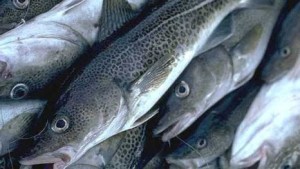 From the above linked article posted on Fishery Nation.com: “The spawning stock is now between the ages for four and seven years, which [lead researcher Rick] Rideout called a ‘pretty restricted’ age.” Click here to read the article “Basically, fish are not surviving to those older ages, they’re coming into the stock … but they’re not surviving to older age, and again, that’s a big concern.” Then abandon MSY management! A majority of younger fish comprising the spawning stock is a function of Maximum Sustainable Yield management (MSY). This MSY management balances the numbers of larger spawning fish taken out of a stock against the numbers of individuals of smaller younger fish entering the stock or “recruitment”—guess what, this yields a highly unstable stock of smaller younger fish. Read the rest here 19:47
From the above linked article posted on Fishery Nation.com: “The spawning stock is now between the ages for four and seven years, which [lead researcher Rick] Rideout called a ‘pretty restricted’ age.” Click here to read the article “Basically, fish are not surviving to those older ages, they’re coming into the stock … but they’re not surviving to older age, and again, that’s a big concern.” Then abandon MSY management! A majority of younger fish comprising the spawning stock is a function of Maximum Sustainable Yield management (MSY). This MSY management balances the numbers of larger spawning fish taken out of a stock against the numbers of individuals of smaller younger fish entering the stock or “recruitment”—guess what, this yields a highly unstable stock of smaller younger fish. Read the rest here 19:47
Cod stocks on south coast of Newfoundland ‘OK but not great’, says researcher
 A new study into the state of cod stocks off the south coast of Newfoundland and Labrador shows a decline and high mortality rates. Lead researcher, Rick Rideout, says while stocks aren’t in terrible shape, there is reason for concern. “3PS cod is currently what we would call in the cautious zone … it’s certainly below the target of where fisheries management would like the stock to be,” said Rideout. “We’re okay, but we’re not great.” “Our estimates of mortality are really high right now, as high as we’ve seen in monitoring this stock,” Read the rest here 10:24
A new study into the state of cod stocks off the south coast of Newfoundland and Labrador shows a decline and high mortality rates. Lead researcher, Rick Rideout, says while stocks aren’t in terrible shape, there is reason for concern. “3PS cod is currently what we would call in the cautious zone … it’s certainly below the target of where fisheries management would like the stock to be,” said Rideout. “We’re okay, but we’re not great.” “Our estimates of mortality are really high right now, as high as we’ve seen in monitoring this stock,” Read the rest here 10:24
Cod was key to our survival – Earl Snelgrove, St. John’s
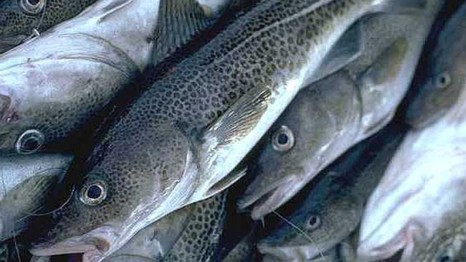 I was born in the small fishing community of Grates Cove, Trinity Bay near Baccalieu Island in the later part of the 1920s and used to go fishing with my father and some of my brothers. My father had three cod traps which he inherited from my grandfather. We set those traps by the shoreline not more than 20 fathoms (about 120 feet) off from the shore. About the time the caplin came to the beaches from the Grand Banks for spawning, anytime from mid-June or early July, we would set our traps, and the cod chasing the caplin would be led into the traps by means of a leader. Read the rest here 09:35
I was born in the small fishing community of Grates Cove, Trinity Bay near Baccalieu Island in the later part of the 1920s and used to go fishing with my father and some of my brothers. My father had three cod traps which he inherited from my grandfather. We set those traps by the shoreline not more than 20 fathoms (about 120 feet) off from the shore. About the time the caplin came to the beaches from the Grand Banks for spawning, anytime from mid-June or early July, we would set our traps, and the cod chasing the caplin would be led into the traps by means of a leader. Read the rest here 09:35
Cod is king — in China, Ryan Cleary, St. John’s
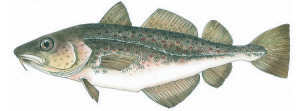 The king of Newfoundland and Labrador is dead, long live the codfish king. But it will take a monumental effort to elevate our iconic cod back to its historic throne of global powerhouse. Challenge appears on every front — including reintroducing cod into a world fish market dominated by cheap, Chinese product, and a potential foreign takeover of local plants and quotas. Read the letter here 08:37
The king of Newfoundland and Labrador is dead, long live the codfish king. But it will take a monumental effort to elevate our iconic cod back to its historic throne of global powerhouse. Challenge appears on every front — including reintroducing cod into a world fish market dominated by cheap, Chinese product, and a potential foreign takeover of local plants and quotas. Read the letter here 08:37
2014 study shows haddock is booming and cod remains in decline in the northeast
 U.S. government scientists reporting on fish stocks off New England are reaching the same conclusions as their Canadian counterparts who have found that haddock is booming and cod remains in decline in the northeast. On Monday, the Northeast Fisheries Science Centre at Woods Hole, Massachusettes released an assessment of 20 northeast ground fish stocks from 2014 surveys. “The rapid increase in haddock, redfish, pollock and white hake contrasts sharply with the decline of cod and the flatfish species,” the report states. Read the rest here 09:13
U.S. government scientists reporting on fish stocks off New England are reaching the same conclusions as their Canadian counterparts who have found that haddock is booming and cod remains in decline in the northeast. On Monday, the Northeast Fisheries Science Centre at Woods Hole, Massachusettes released an assessment of 20 northeast ground fish stocks from 2014 surveys. “The rapid increase in haddock, redfish, pollock and white hake contrasts sharply with the decline of cod and the flatfish species,” the report states. Read the rest here 09:13
Fishermen obeyed their quotas, so why did Maine cod stocks collapse?
 Dr. Andrew Pershing from the Gulf of Maine Research Institute (GMRI), lead author of the study released Thursday in Science, explained for the first time why cod stocks in the Gulf of Maine have decreased to 3 to 4 percent of sustainable levels, despite numerous harvesting restrictions in 2010 by fisheries managers. Fisheries published strict quota limits for fishermen without accounting for ocean warming in the Gulf of Maine,,, By not accounting for such an influential change, fisheries set quota ceilings that were too high and inadvertently endorsed severe overfishing. Read the rest here 13:09
Dr. Andrew Pershing from the Gulf of Maine Research Institute (GMRI), lead author of the study released Thursday in Science, explained for the first time why cod stocks in the Gulf of Maine have decreased to 3 to 4 percent of sustainable levels, despite numerous harvesting restrictions in 2010 by fisheries managers. Fisheries published strict quota limits for fishermen without accounting for ocean warming in the Gulf of Maine,,, By not accounting for such an influential change, fisheries set quota ceilings that were too high and inadvertently endorsed severe overfishing. Read the rest here 13:09
Scientists: Warming ocean factor in collapse of Gulf of Maine cod fishery
 The scientists behind the Science report say the warming of the Gulf of Maine, which accelerated from 2004 to 2013, reduced cod’s capacity to rebound from fishing pressure. The report gives credence to the idea — supported by advocacy groups, fishing managers and even some fishermen — that climate change has played a role in cod’s collapse. The lead author of the study, Andrew Pershing of the Gulf of Maine Research Institute in Portland, said the gulf is warming at a rate 99 percent faster than anywhere else in the world, and as a result, too many of the fish aren’t living past age 4. Cod can live to be older than 20. Read the rest here 07:58
The scientists behind the Science report say the warming of the Gulf of Maine, which accelerated from 2004 to 2013, reduced cod’s capacity to rebound from fishing pressure. The report gives credence to the idea — supported by advocacy groups, fishing managers and even some fishermen — that climate change has played a role in cod’s collapse. The lead author of the study, Andrew Pershing of the Gulf of Maine Research Institute in Portland, said the gulf is warming at a rate 99 percent faster than anywhere else in the world, and as a result, too many of the fish aren’t living past age 4. Cod can live to be older than 20. Read the rest here 07:58
Warming waters a major factor in the collapse of New England cod, study finds
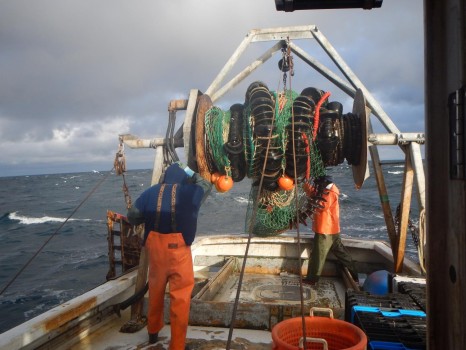 Pershing and colleagues from GMRI, the University of Maine, Stony Brook University, the Bigelow Laboratory for Ocean Sciences, and NOAA’s Earth System Research Laboratory, including the Cooperative Institute for Research in Environmental Sciences at the University of Colorado Boulder, found that increasing water temperatures reduce the number of new cod produced by spawning females. Their study also suggests that warming waters led to fewer young fish surviving to adulthood. Read the rest here 18:04
Pershing and colleagues from GMRI, the University of Maine, Stony Brook University, the Bigelow Laboratory for Ocean Sciences, and NOAA’s Earth System Research Laboratory, including the Cooperative Institute for Research in Environmental Sciences at the University of Colorado Boulder, found that increasing water temperatures reduce the number of new cod produced by spawning females. Their study also suggests that warming waters led to fewer young fish surviving to adulthood. Read the rest here 18:04
The enigma behind America’s freak, 20-year lobster boom
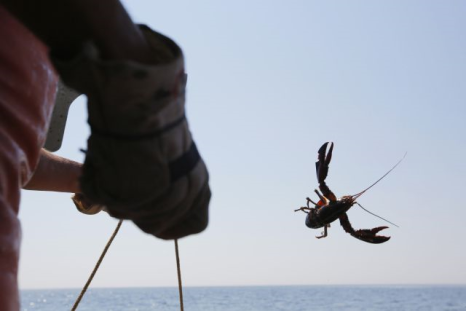 Even as biologists puzzle over Maine’s strange serendipity, a more ominous mystery is emerging. A scientist who tracks baby lobsters reports that in the last few years their numbers have abruptly plummeted, up and down Maine’s coast. With the number of breeding lobsters at an all-time high, it’s unclear why the baby lobster population would be cratering—let alone what it portends. It could reflect a benign shift in baby lobster habitats. Or it could be that the two-decade boom is already on its way to a bust. To form a clearer picture why, we first need to unravel the possible causes of the current lobster glut. Read the rest here 09:23
Even as biologists puzzle over Maine’s strange serendipity, a more ominous mystery is emerging. A scientist who tracks baby lobsters reports that in the last few years their numbers have abruptly plummeted, up and down Maine’s coast. With the number of breeding lobsters at an all-time high, it’s unclear why the baby lobster population would be cratering—let alone what it portends. It could reflect a benign shift in baby lobster habitats. Or it could be that the two-decade boom is already on its way to a bust. To form a clearer picture why, we first need to unravel the possible causes of the current lobster glut. Read the rest here 09:23
UK FISHERIES survey logbooks from the 1930s to 1950s have been digitised for the first time – What took them so long?
 Scientists at the Centre for Environment, Fisheries and Aquaculture Science (Cefas) and the University of Exeter found that at the time, the warm seas experienced around Norway benefitted the cod, similar to the conditions there today. The Barents Sea surveys were mainly carried out by the steam vessel RV Ernest Holt, which was commissioned especially to withstand Arctic conditions. Scientists at the time knew that the cod were being affected by their environmental conditions, but digitising this data has meant that much more modern techniques can be used to delve into the responses of cod to changes in their environment and diet. Read the rest here 15:45
Scientists at the Centre for Environment, Fisheries and Aquaculture Science (Cefas) and the University of Exeter found that at the time, the warm seas experienced around Norway benefitted the cod, similar to the conditions there today. The Barents Sea surveys were mainly carried out by the steam vessel RV Ernest Holt, which was commissioned especially to withstand Arctic conditions. Scientists at the time knew that the cod were being affected by their environmental conditions, but digitising this data has meant that much more modern techniques can be used to delve into the responses of cod to changes in their environment and diet. Read the rest here 15:45



































